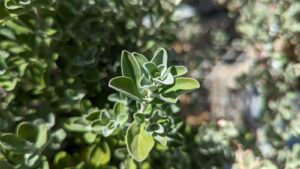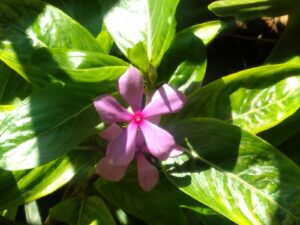Madagascar periwinkle is a plant native to the island of Madagascar and widely cultivated and naturalized in other parts of the world, especially in tropical and subtropical regions. The plant is revered for its ornamental and medicinal properties, and its hardiness and adaptability.

Texas Sage
Texas sage is an evergreen shrub that belongs to the figwort family, Scrophulariaceae. It has tender grey hairs that cover




